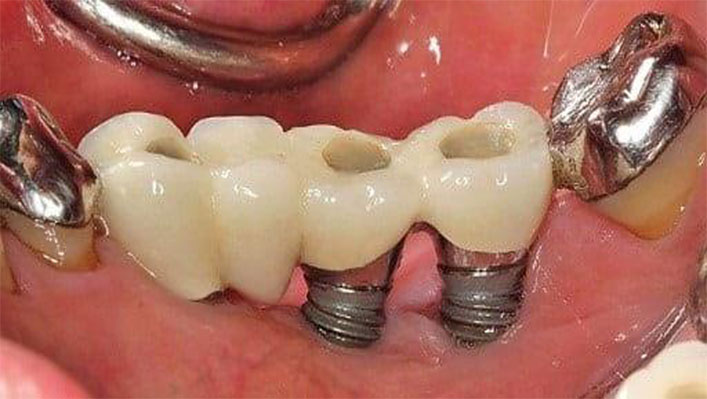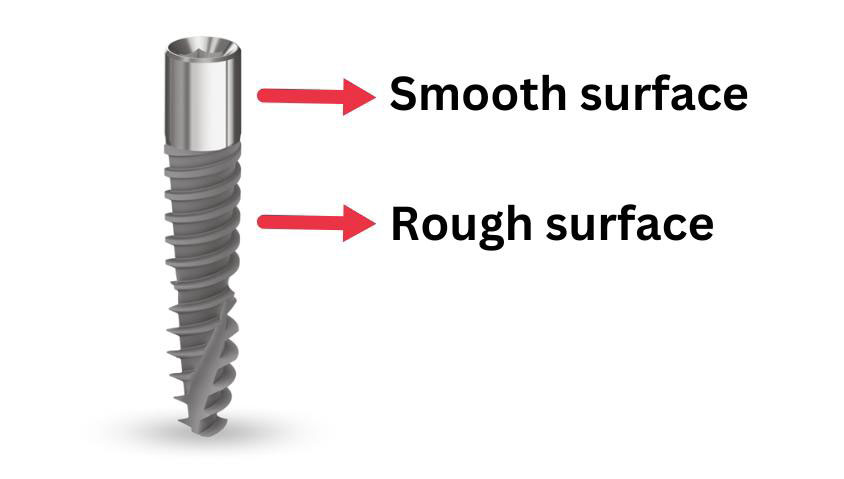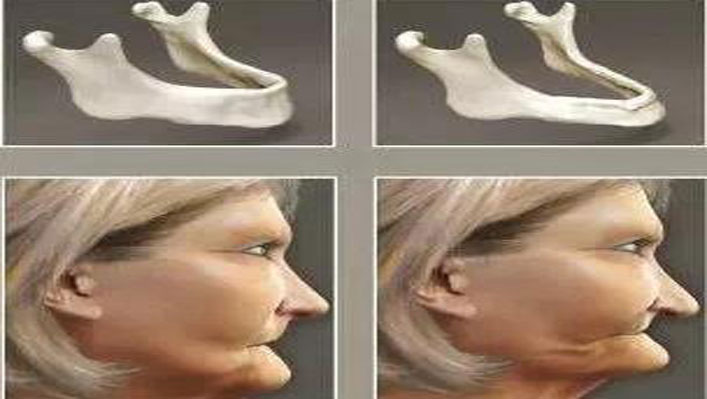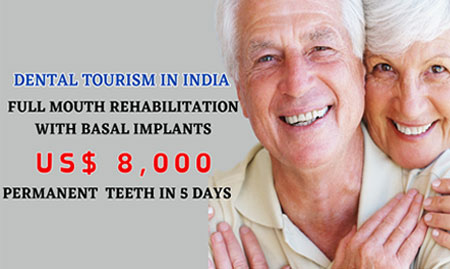
Dr. K Sharada Reddy, Author
Senior Dentist & Full Mouth Rehabilitation Expert
Introduction: What Are Dental Implants?
Dental implants are advanced tooth replacement solutions that act as artificial roots, restoring function, aesthetics, and confidence. They are considered the gold standard for missing teeth replacement because of their high success rates, natural feel, and durability. Individuals from around the world travel to India seeking affordable dental implants abroad due to the combination of international-quality treatment and cost-effectiveness.
However, not all implants succeed. Understanding the reasons for dental implant
failure helps patients make informed decisions and choose the right treatment
protocol.
The Biggest Reason for Implant Failure: Peri Implantitis

The leading cause of implant failure is peri-implantitis, a bacterial infection that leads to gum inflammation, bone loss, and eventual implant loosening. Patients often search for “what causes dental implant failure” or “can dental implants get infected”, and the answer is almost always related to peri-implantitis.
Why Does Peri-Implantitis Happen?
Poor oral hygiene
History of gum disease before implant placement
Smoking and tobacco use
Uncontrolled diabetes and systemic conditions
Improper surgical technique
poor-quality implant systems
Occlusal overload
Poor prosthetic design
How to avoid Peri implantitis
At LBR Dental and Implant Center, Hyderabad, India, we specialize in treating both Indian and international patients seeking dental implants abroad. Our center follows the CPBCCI Protocol (Crestal Polished Bicortical Conventional Implants), designed to prevent peri-implantitis and provide long term success. The FDA approved implants that we use under our protocol possess a polished collar and a rough surfaced body

Polished Crestal Surface – Prevents bacterial adhesion and stops infection from spreading into the implant body safe in individuals with diabetes and also in individuals who smoke.
Rough-Surfaced Body – Promotes strong Osseo Integration of the implant body with the bone for lifelong stability irrespective of health issues like diabetes and hyper tension
Multi-Unit Abutments –
Allow placement of tilted implants without damaging vital structures like nerves or sinus.
Avoid painful and expensive procedures like sinus lifts and bone grafts.
Enable immediate fixed teeth within 7–10 days, a major attraction for international dental tourism patients.
Correct implant angulation at gum level for natural and proper aesthetics.
Maintain a safe distance between implant body and prosthesis, keeping infections at the tooth level only.
Use of FDA approved implants
All on 6 protocol to prevent implant overload and to avoid cantilevers
This protocol ensures that patients whether local or international get fast, safe, and permanent teeth replacement without delays.
Other Reasons for Dental Implant Failure
Apart from peri-implantitis, implants may fail due to several factors. However, with proper planning and advanced techniques, most of these risks can be prevented.
Incorrect Patient Selection – Placing implants in poor bone
How to counter this: A thorough medical history, diagnostic scans (CBCT), and case planning ensure that the implants are placed in the highly mineralized cortical bone and not the alveolar bone. Using the tilted technique to place implants, here implants are placed at an angulation so as to avoid the soft bone and also vital nerve and anatomic structures like the sinus thereby avoiding the need for invasive surgeries like sinus lifts and bone grafting
Surgical Errors – Overheating bone during drilling, contamination of the implant surface, or wrong angulation compromises Osseo Integration. How to counter this: Using proper drilling protocols, adequate irrigation, sterile
handling avoids surgical complications.
Excessive Biting Forces – untreated bruxism can overload implants, leading to micro-fractures and bone loss. How to counter this: Proper occlusal design, immediate loading of teeth to stabilize the implants, and use of night guards for bruxism patients protect implants from excess stress.

Cheap, Low-Quality Implants – Implants that are not FDA approved from unregulated companies or with poor surface technology show higher failure rates. How to counter this: Always select internationally certified FDA approved conventional two piece implants with proven track records and long-term studies.
Use of Basal Implants – Basal implants often lack long-term survival evidence and come with inherent design flaws.
Insufficient Number of Implants – Using fewer implants than required leads to prosthetic overload and long-term failure.
How to counter this: Full-arch restorations should use the optimal number of implants (commonly 6 for the upper arch and 6 for the lower arch, All on 6 technique) depending on bone quality and prosthetic load.
Improper Implant Placement Technique – Wrong angulation or depth compromises prosthetic fit and bone stability.
How to counter this: Use of multi-unit abutments allows correction of tilted implants at gum level, ensuring ideal prosthetic outcomes and avoiding failure.
Problems Associated With Basal Implants
Many patients abroad search for “Are basal implants safe?” or “Basal implants vs conventional implants”. While basal implants are often marketed as quick-fix solutions for patients with poor bone, they come with significant drawbacks:
Mechanical Fixation Only (Osseo-Fix) – Basal implants do not truly Osseo Integrate with the bone. They only achieve a mechanical lock (osseo-fix), which poses long term problems since permanent stability requires biological Osseo Integration.
High Risk of Infection – Because of their design and placement in compromised bone, basal implants are prone to peri-implant infection
Cement-Retained Prosthesis – Most basal implants support cement-retained prostheses, making them very difficult to retrieve or repair when required. This creates problems if prosthetic adjustments are needed in the future.
Single-Piece Design – Basal implants are usually single-piece systems, which makes it extremely difficult to adjust angulation. In cases where implants must be placed at an angle (to avoid nerves or sinus), proper prosthetic correction at the gum level becomes impossible.
Poor Flexibility in Prosthetics – Limited prosthetic options result in compromised chewing efficiency and aesthetics.
Lack of Long-Term Clinical Evidence – Unlike conventional implants, basal implants lack robust international studies proving their survival and success rates.
All these reasons make basal implants a wrong choice for long-term implant success. For international patients seeking predictable, lifelong solutions, conventional implants using the CPBCCI protocol with multi-unit abutments remain the safest and most scientifically proven option.
Conclusion
Dental implants can transform lives, but their success depends on the implant system, surgical technique, and post-care. While peri-implantitis is the leading cause of implant failure, other factors such as poor hygiene, uncontrolled health conditions, surgical mistakes, bruxism, and basal implants also contribute to complications.
At LBR Dental and Implant Center, Hyderabad, India, we follow the CPBCCI protocol with polished crestal implants and multi-unit abutments, ensuring infection resistance, strong osseointegration, and immediate results. Our approach allows patients, including those flying in for dental tourism in India, to receive permanent fixed teeth in just 7–10 days—without bone grafts or sinus lifts.
Choosing the right implant protocol today means enjoying a confident, healthy smile for decades.
Frequently Asked Questions
Peri-implantitis is an infection around implants causing bone loss and implant failure. It can be prevented by: Choosing implants with polished crestal surfaces and rough Osseo Integration zones (CPBCCI protocol). Using multi-unit abutments that protect implant bodies. Maintaining strict oral hygiene and visiting for regular check-ups. Selecting an experienced implantology's specializing in international implant patients.
The biggest causes include peri-implantitis, poor oral hygiene, smoking, uncontrolled diabetes, bruxism, surgical errors, low-quality implants, and basal implants. Patients searching for “why dental implants fail after 1 year” or “late dental implant failure causes” will find these as the main reasons.
Basal implants fail more often because they are placed in compromised bone, have higher infection risks, and limited long-term evidence. Patients looking for “basal implants vs conventional implants survival rates” should know that conventional CPBCCI implants are far safer, scientifically proven, and internationally accepted.
Multi-unit abutments:
Correct angulation issues at gum level.
Reduce the need for sinus lifts and grafts.
Protect implants by restricting infection to the prosthesis.
Allow full mouth rehabilitation with immediate fixed teeth in 7–10 days, making them ideal for international dental tourists.
Yes. India is one of the leading destinations for dental tourism because patients receive world-class implantology at affordable costs. At LBR Dental and Implant Center, our protocols (CPBCCI + multi-unit abutments) ensure predictable, long lasting results without unnecessary surgeries.




